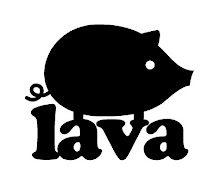Organic cotton is the version of its conventional counterpart grown without pesticides, herbicides, insecticides, chemical fertilizers or any other chemicals, and that makes it hugely different, especially considering that cotton (organic or otherwise) provides about half of all the world's fiber needs. Conventional cotton is one of the most chemically-dependent crops, sucking up 10% of all agricultural chemicals and 25% of insecticides on 3% of our arable land; that's more than any other crop per unit. That adds up to 1/3 of a pound of chemicals to produce enough cotton for a t-shirt, and 3/4 of a pound for a pair of jeans. And that's just not bad for the planet; 20,000 deaths occur each year from pesticide poisoning in developing countries, many of these from cotton farming, according to the World Health Organization (WHO).
Organic cotton, on the other hand, uses agricultural methods designed to help sustain the land it grows on, the people who grow and harvest it, and the planet in general. Organic farming really starts with the soil. Compost, frequent crop rotations and cover crop strategies replace synthetic fertilizers to keep the soil healthy and productive. Weeds are controlled by innovative farm machinery, hand labor or flame devices rather than herbicide applications. Rather than attempting to eradicate all insects with chemicals, organic farmers cultivate a diversity of natural enemies which prey on insect pests, and lure pests away from cotton by planting trap crops. Insect pests can be effectively kept in balance with well-timed introduction of beneficial insects to fields. In warmer growing regions, where the cotton plants must be killed or defoliated to pick a quality crop before the onset of winter rains, organic growers shut off water early, and apply certified materials to promote cotton boll opening and leaf dropping, readying the fibers for harvest. In the US, both conventional and organic cotton are mostly machine-picked; in some developing countries, cotton is still harvested by hand.
Like other organic products (food is the most prominent example), organic cotton must be certified as such by a third party, based upon pre-determined rules and regulations for what is and isn't allowed in the cultivation process. Here in the United States, the US Department of Agriculture (USDA) regulates the organic certification process, based on the standards set in the Organic Food Production Act of 1990 (OFPA); because organic cotton is grown around the world, and the US supply is not large enough to keep up with demand, other certification groups are often cited for products we see and use. The Dutch organization SKAL (one we've seen around a lot), for example, works in Europe, South America, Africa and Asia to certify different agricultural products as organic. Among the rules for certification, in addition to the ongoing ban of pesticides and other chemicals, is that the soil cannot have been sprayed with any of the banned substances for three years, so proper organic certification takes significant time, effort and bureaucratic rule-following (some might call it hoop-jumping or cutting red tape, but we won't) but the results are something to be proud of: a truly sustainable product.
hen it comes time to put it on, many believe that organic cotton is softer and easier on your skin (though we don't have any scientific data, this TreeHugger is happy to corroborate this), and, of course, there aren't any latent pesticides or other chemicals that might disagree with your skin. This extra comfort is an added bonus when considering all of the benefits for the planet and its people, and the result is that organic cotton has been growing at an incredible rate.
Market retail leaders like Patagonia and Nike, who both blend and use organic cotton exclusively in their outdoor apparel, are being joined by high-end designers like Loomstate and Katherine Hamnett (whose work is directly above). This has been modulated by more mainstream designers like H&M, The Gap, Levi's and L.L. Bean, meaning that it's easier (and cheaper!) to get than ever before. Doesn't that make you feel all warm & fuzzy inside?
More information can be found via the USDA, the Sustainable Cotton Project, the Organic Trade Association and PAN Germany's Directory for Organic Cotton. It's been a very popular topic here at TreeHugger; in addition to all the links above, we've mentioned it in everything from wallpaper to crib sets, underwear to aprons, long johns to yoga mats and towels and sheets to organic cotton candy (wait a minute...). We also recommend a quick spin through our How to Green Your Wardrobe Guide for info on organic cotton and other green textiles.




No comments:
Post a Comment